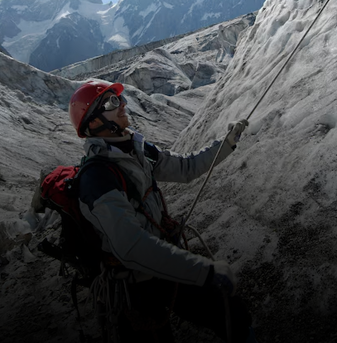
- admin
- April 16, 2025
Table of Contents
Climbing Mount Everest isn’t just a physical challenge — it’s a psychological one. Every year, climbers put themselves through brutal conditions, oxygen-starved altitudes, and the real risk of death. Why? What drives someone to leave safety behind and risk everything to stand on the roof of the world?
This question lies at the heart of Expedition to the Unknown: Mallory and Irvine by Tyler Long. The book offers a detailed account of George Mallory and Andrew Irvine’s 1924 British Everest expedition — one of history’s most famous and mysterious summit attempts. Using their story as a case study, we can better understand the psychology behind climbing Everest — the mental strain, the motivations, and the mindset required to take on such a monumental challenge.
The Mental Toll of High-Altitude Climbing
At extreme altitudes, everything is harder. Breathing. Thinking. Moving. The body begins to shut down in what’s known as the “Death Zone” (above 8,000 meters). Add to that freezing winds, avalanches, and unpredictable weather, and the mountain becomes more than a physical obstacle — it becomes a mental battlefield.
In Expedition to the Unknown, Long describes how isolation, fear, and uncertainty impacted Mallory and Irvine. At that time, expeditions were cut off from the outside world. There were no satellite phones, no GPS, and no quick evacuations. Climbers had to cope with long periods of silence, anxiety, and doubt. Irvine was just 22 years old and new to mountaineering, yet he showed incredible mental strength. Mallory, already a seasoned climber, carried the weight of national pride and personal ambition. Both were under enormous psychological pressure.
“Because It’s There” — The Power of Purpose
George Mallory famously said he wanted to climb Everest “because it’s there.” While that quote has often been simplified, Tyler Long’s exploration in the book reveals the deeper psychology behind it. Mallory wasn’t just chasing glory — he was chasing meaning. Everest represented the ultimate test of endurance and will. For him, the mountain symbolized possibility — a way to push the limits of what humans could achieve.
This drive — to test ourselves against something more significant — is still common in climbers today. Whether it’s Everest or any personal summit, people are drawn to challenges that force them to grow. For some, it’s about proving something to the world. For others, it’s about proving something to themselves.
Fear, Pressure, and the Mental Tightrope
Long details the unique fears Everest climbers face — not just fear of death but failure, fear of letting the team down, and fear of making the wrong call in a life-or-death moment. In the book, Mallory is described as “having a horrible time on a tightrope” when choosing between staying with his family or returning to Everest. That line captures the emotional strain so well. These aren’t simple decisions. The pursuit of Everest costs more than physical energy — it tests loyalty, relationships, and mental resilience.
There’s also the added weight of expectation. Mallory was Britain’s climbing hero. Irvine was a young, promising engineer. Together, they represented hope for the nation. That kind of pressure can push people forward — but it can also lead to risky decisions. When they disappeared near the summit, the world wondered: did they make it? And if they didn’t, why did they push on?
The Same Drive, a Century Later
Reading Tyler Long’s work, you realize how little has changed. Today’s climbers have better gear, oxygen, and support systems. However, the core motivations are still the same: the need to find purpose, overcome fear, and reach something few others have. Everest still draws people willing to suffer for something bigger than themselves.
Mallory and Irvine’s climb wasn’t just a physical expedition but a psychological one. And even though they never returned, their legacy endures because it speaks to something deeply human: the need to try, strive, climb — even when success isn’t guaranteed.
Final Thoughts
Expedition to the Unknown: Mallory and Irvine don’t just recount a historical climb. It helps us understand the mental game behind high-stakes mountaineering. Through Mallory and Irvine’s experience, Tyler Long explores the deep motivations that still drive climbers today — courage, curiosity, pressure, and the search for meaning.
So, why do we climb Everest? Not for comfort. Not for safety. But because of the struggle, risk, and silence of the summit, people find something real — a glimpse of what they’re truly capable of.